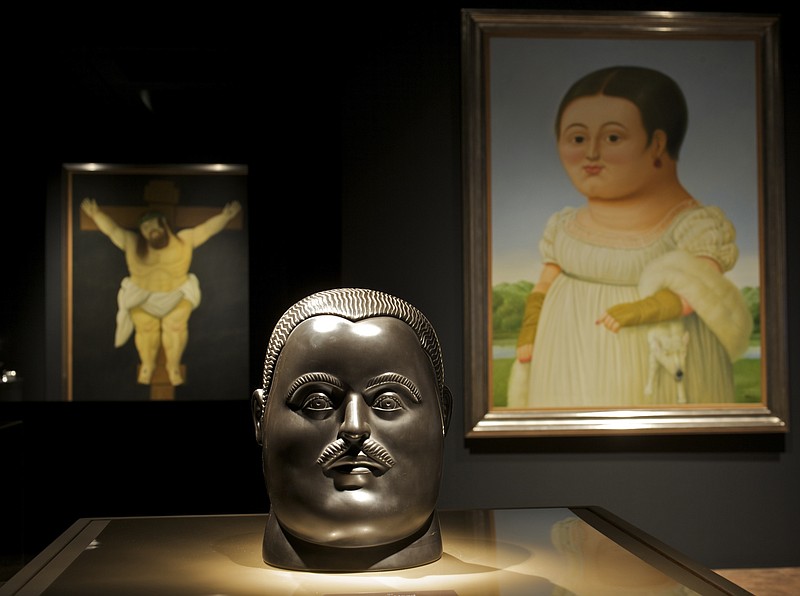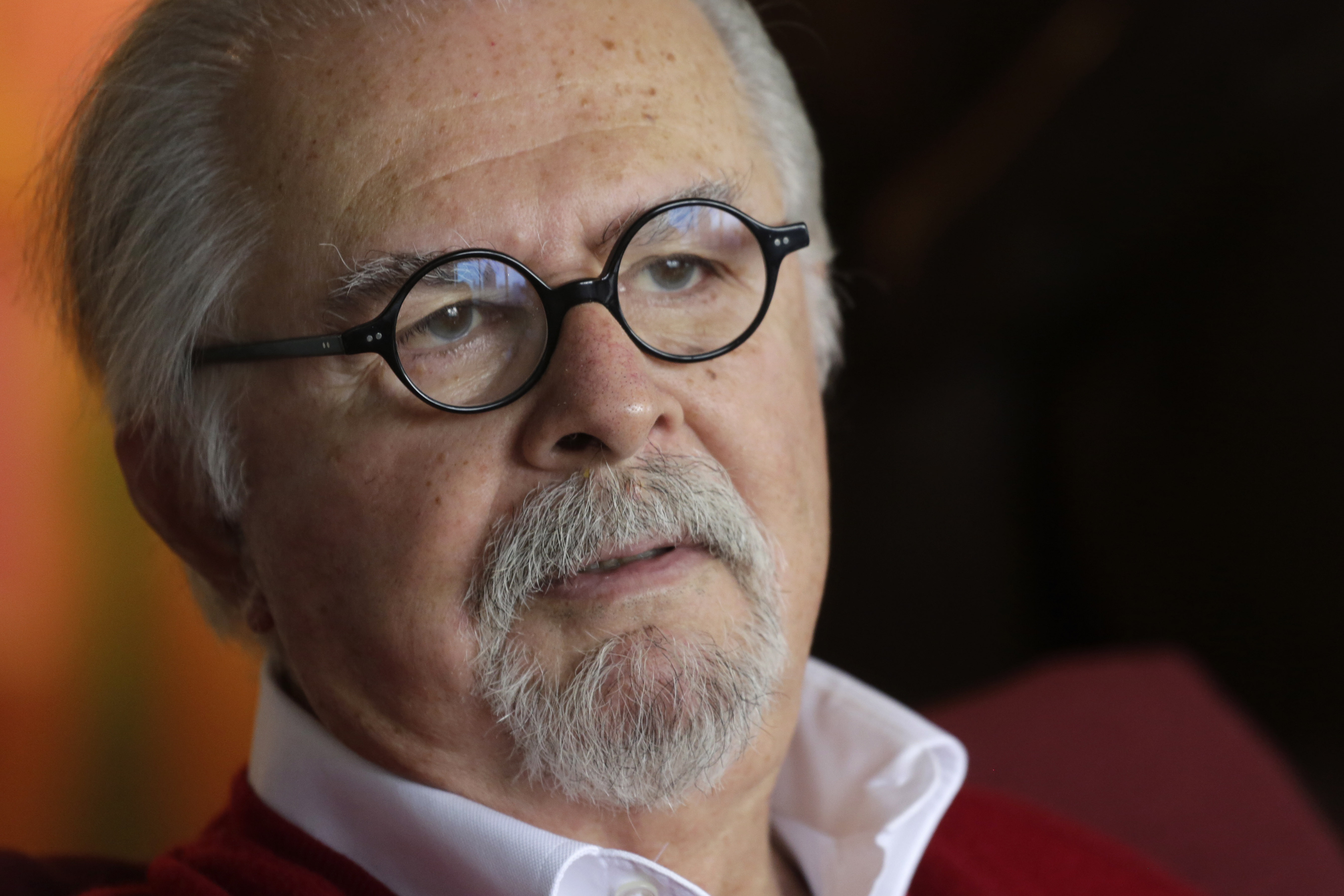BOGOTA, Colombia -- Renowned Colombian painter and sculptor Fernando Botero, whose depictions of people and objects in plump, exaggerated forms became emblems of Colombian art around the world, has died. He was 91.
Lina Botero told the Colombian radio station Caracol that her father died Friday morning in Monaco of pneumonia complications.
Botero depicted politicians, animals, saints, and scenes from his childhood in an inflated and colorful form that was instantly recognizable. During his lifetime the artist attained global fame and influence, despite his humble origins, and his paintings were exhibited in museums globally, while his imposing bronze sculptures can be found in the parks and avenues of many European and Latin American capitals.
"His success was truly immense," Botero's son Juan Carlos, wrote in a biography of his father, published in 2010. "Fernando Botero has created a unique style, that is original and easy to recognize."
Botero's paintings fetched millions of dollars at international auctions, and the artist was highly esteemed in his native Colombia, not just because of his success abroad, but due to the generous donations he made to his home country, including 23 statues, that are now in a park in downtown Medellin, and have become one of the city's most visited attractions.
Botero also donated 180 paintings to Colombia's Central Bank which were used to create the Botero Museum in Bogota. His sculpture of a white, chubby pigeon, standing proudly on a pedestal, became an emblem of Colombia's efforts to make peace with rebel groups and is currently placed in a prominent gallery inside the nation's presidential palace.
Many Colombians appreciated Botero's art because it evokes nostalgia for the country as it was in the early 20th century. His characters wear bowler hats, and sport neatly trimmed mustaches. They move around in a colorful universe of green hills and lush trees, where homes are made with clay roof tiles.
"The painter of our traditions and our defects, the painter of our virtues has died," President Gustavo Petro wrote on X, the platform formerly known as Twitter, on Friday. "He painted violence and peace. He painted the pigeon that was rejected one thousand times, and put one thousand times on a throne."
Botero was born on April 19, 1932, in Medellín, Colombia. As a child he was enrolled by an uncle in a bullfighting school that he soon left, but it was a world captured later in his paintings. Botero decided at age 14 to dedicate his life to the arts, after managing to sell some sketches of bullfights to fans outside the city's bullfighting arena. His mother supported the decision, but told him he would have to pay for his studies.
As a teenager, Botero participated in a group exhibition in Bogota, and had his first individual exhibition there in 1951. In the following year, he went to Madrid to study at the Royal Academy of Fine Arts of San Fernando.
From Europe, he traveled to Mexico to study the work of Diego Rivera and José Clemente Orozco.
During his travels, Botero married Gloria Zea, with whom he had three children, Fernando, Lina and Juan Carlos. Returning to Bogotá in 1958, he was appointed professor at the School of Arts of the National University. He later divorced and took up residence in New York in 1960, where he arrived with just a few hundred dollars in his pocket.
In the 1960s Botero began experimenting with the volume of objects and people in his paintings. His original and plump creations attracted the attention of art critics and, by then, the painter had created hundreds of drawings as well as some 1,000 paintings.
Botero remarried in 1964 with Cecilia Zambrano, who he also later divorced. In 1970 they had a son, Pedro, who died four years later in a car accident in Spain. Botero captured the pain of his son's death in the painting "Pedrito" that depicts his son riding a toy horse and wearing a blue police officer's uniform. He also donated 16 works to the Museum of Antioquía, in Medellín, to honor the boy and in turn the museum named a room in memory of "Pedrito Botero."
In the 1970s, Botero put aside painting and began to experiment with sculptures in bronze, marble and cast iron, which brought him great success. In 1978 Botero returned to painting, and then alternated between the two disciplines.
In his paintings, the artist depicted scenes of daily life, such as a family picnic or a party in an early 20th-century ballroom. But he also tackled political subjects, like the death of drug dealer Pablo Escobar, or the emergence of rebel groups.
In 1995, his bronze sculpture "The Bird," weighing more than 1.8 tons and displayed in a park in Medellín, was dynamited by unknown attackers, causing the death of 22 people and injuring more than 200.
In 2005, Botero created a series of 79 paintings that depicted U.S. soldiers torturing Iraqis at the infamous Abu Ghraib prison in Baghdad, just a year after the incident came to light. The artist struggled to get the paintings shown in U.S. museums, but they were eventually exhibited at the University of California Berkeley, which still houses some of the paintings.
"I was moved by the hypocrisy of the situation" Botero said of his Abu Ghraib series in a 2007 interview with Semana Magazine. "A country that presents itself to the world as a model of compassion and as a defender of human rights, ended up torturing people in the same prison where Sadam Hussein tortured people."
Botero said he would paint every day from morning until night, and in absolute silence, so as not to allow anything to distract him.
His daughter, Lina, told Colombian radio station Blu on Friday that Botero had been working at his studio in Monaco regularly until last weekend. "He couldn't work on oil paintings," she explained, because he was too weak to stand and hold larger brushes. "But he was experimenting with water paintings."
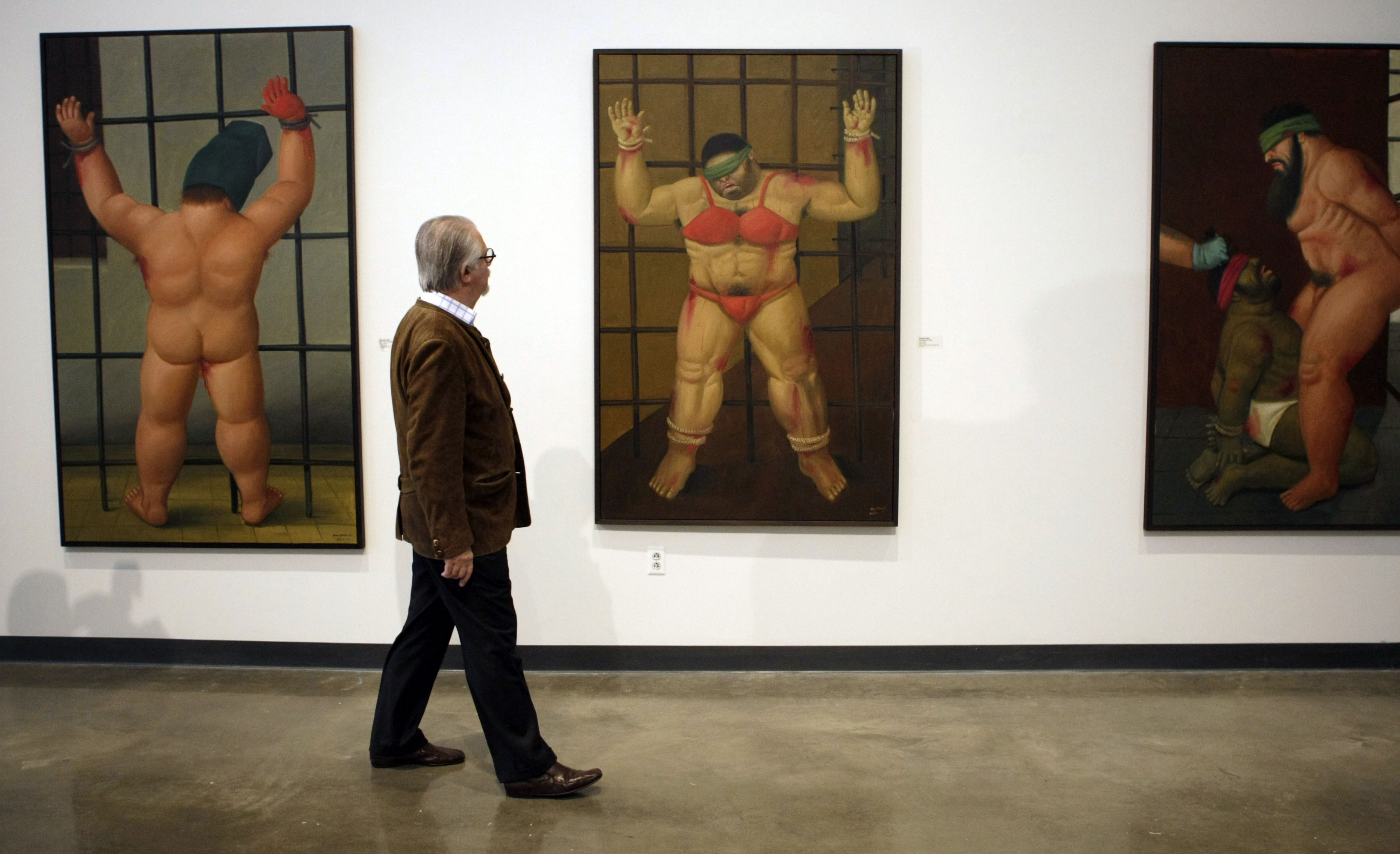 EDS NOTE: GRAPHIC CONTENT - FILE - Colombian artist Fernando Botero looks over his work at a first complete U.S. showing of "Art of Confrontation," his paintings and drawings on Abu Ghraib prison at American University Museum in Washington, Nov. 5, 2007. Botero died on Sept. 15, 2023 in Monaco, according to his daughter Lina Botero who confirmed his passing to Colombian radio station Caracol. (AP Photo/Pablo Martinez Monsivais, File)
EDS NOTE: GRAPHIC CONTENT - FILE - Colombian artist Fernando Botero looks over his work at a first complete U.S. showing of "Art of Confrontation," his paintings and drawings on Abu Ghraib prison at American University Museum in Washington, Nov. 5, 2007. Botero died on Sept. 15, 2023 in Monaco, according to his daughter Lina Botero who confirmed his passing to Colombian radio station Caracol. (AP Photo/Pablo Martinez Monsivais, File)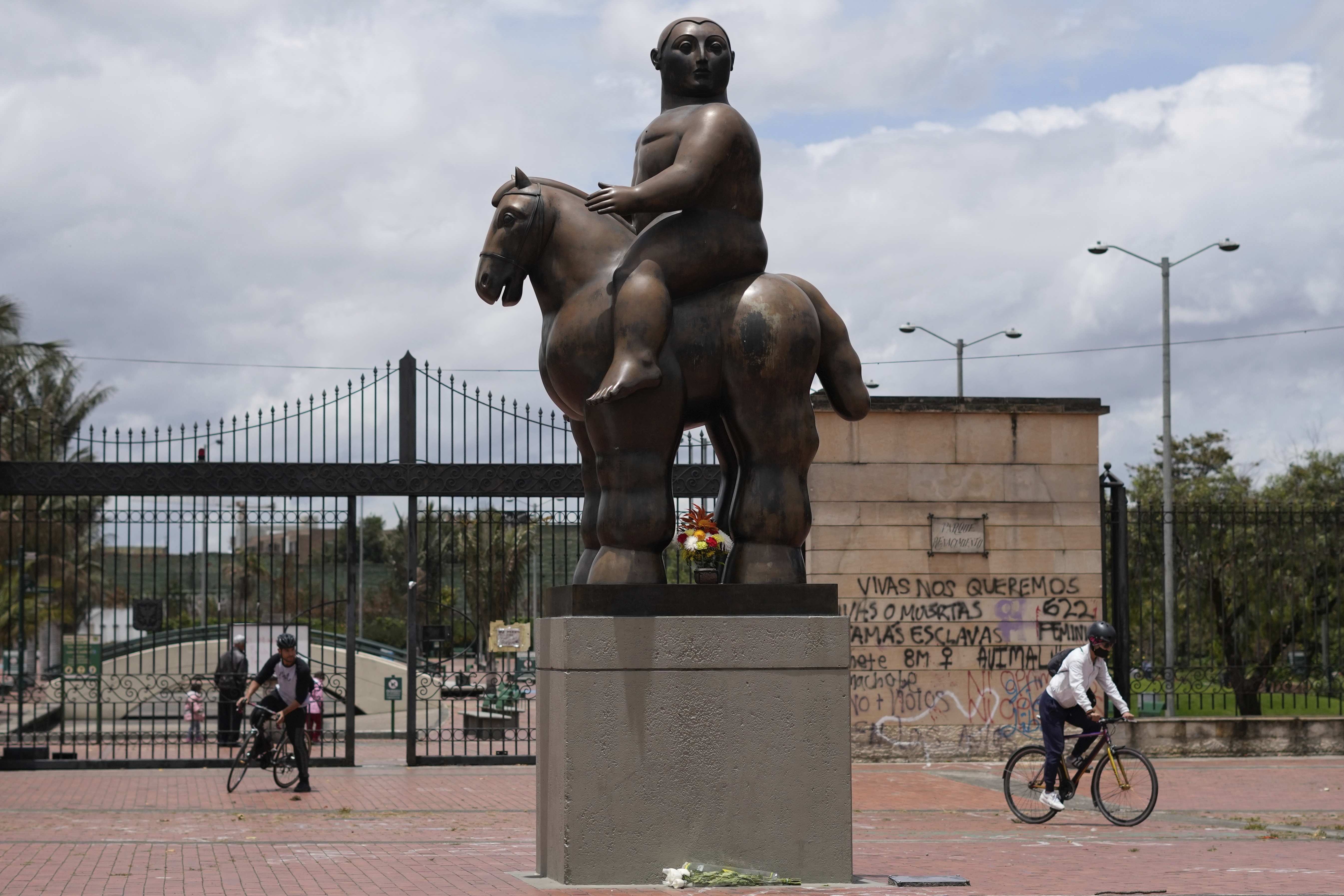 A sculpture by Colombian artist Fernando Botero, titled Man on Horseback, stands outside Renaissance Park in Bogota, Colombia, Friday, Sept. 15, 2023. Renowned Colombian painter and sculptor Fernando Botero, whose depictions of people and objects in plump, exaggerated forms became emblems of Colombian art around the world, has died on Sept. 15. He was 91. (AP Photo/Fernando Vergara)
A sculpture by Colombian artist Fernando Botero, titled Man on Horseback, stands outside Renaissance Park in Bogota, Colombia, Friday, Sept. 15, 2023. Renowned Colombian painter and sculptor Fernando Botero, whose depictions of people and objects in plump, exaggerated forms became emblems of Colombian art around the world, has died on Sept. 15. He was 91. (AP Photo/Fernando Vergara)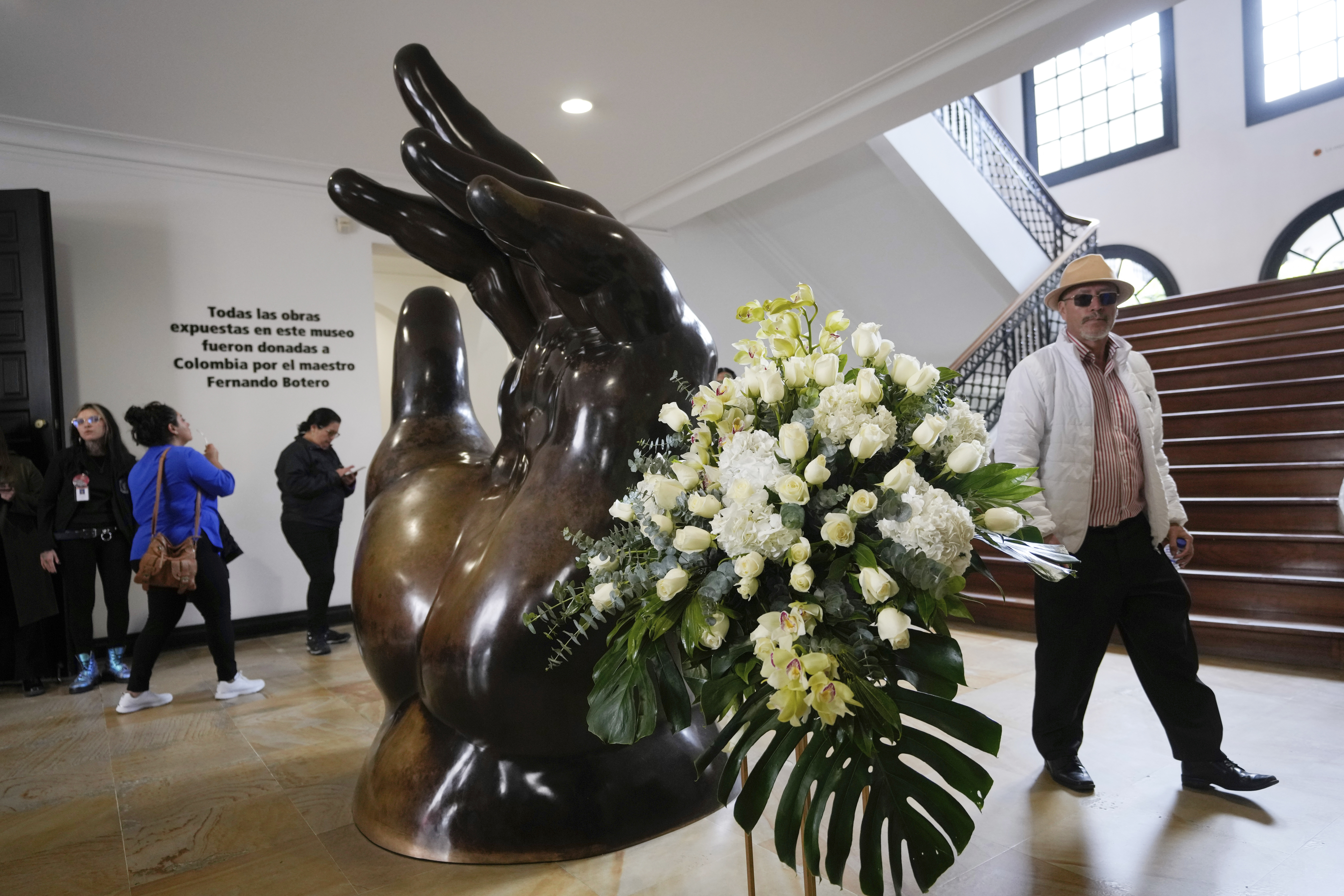 A floral arrangement stands next to the sculpture by Colombian artist Fernando Botero, titled The Hand, at the Botero Museum in Bogota, Colombia, Friday, Sept. 15, 2023. Renowned Colombian painter and sculptor Fernando Botero, whose depictions of people and objects in plump, exaggerated forms became emblems of Colombian art around the world, has died on Sept. 15. He was 91. (AP Photo/Fernando Vergara)
A floral arrangement stands next to the sculpture by Colombian artist Fernando Botero, titled The Hand, at the Botero Museum in Bogota, Colombia, Friday, Sept. 15, 2023. Renowned Colombian painter and sculptor Fernando Botero, whose depictions of people and objects in plump, exaggerated forms became emblems of Colombian art around the world, has died on Sept. 15. He was 91. (AP Photo/Fernando Vergara)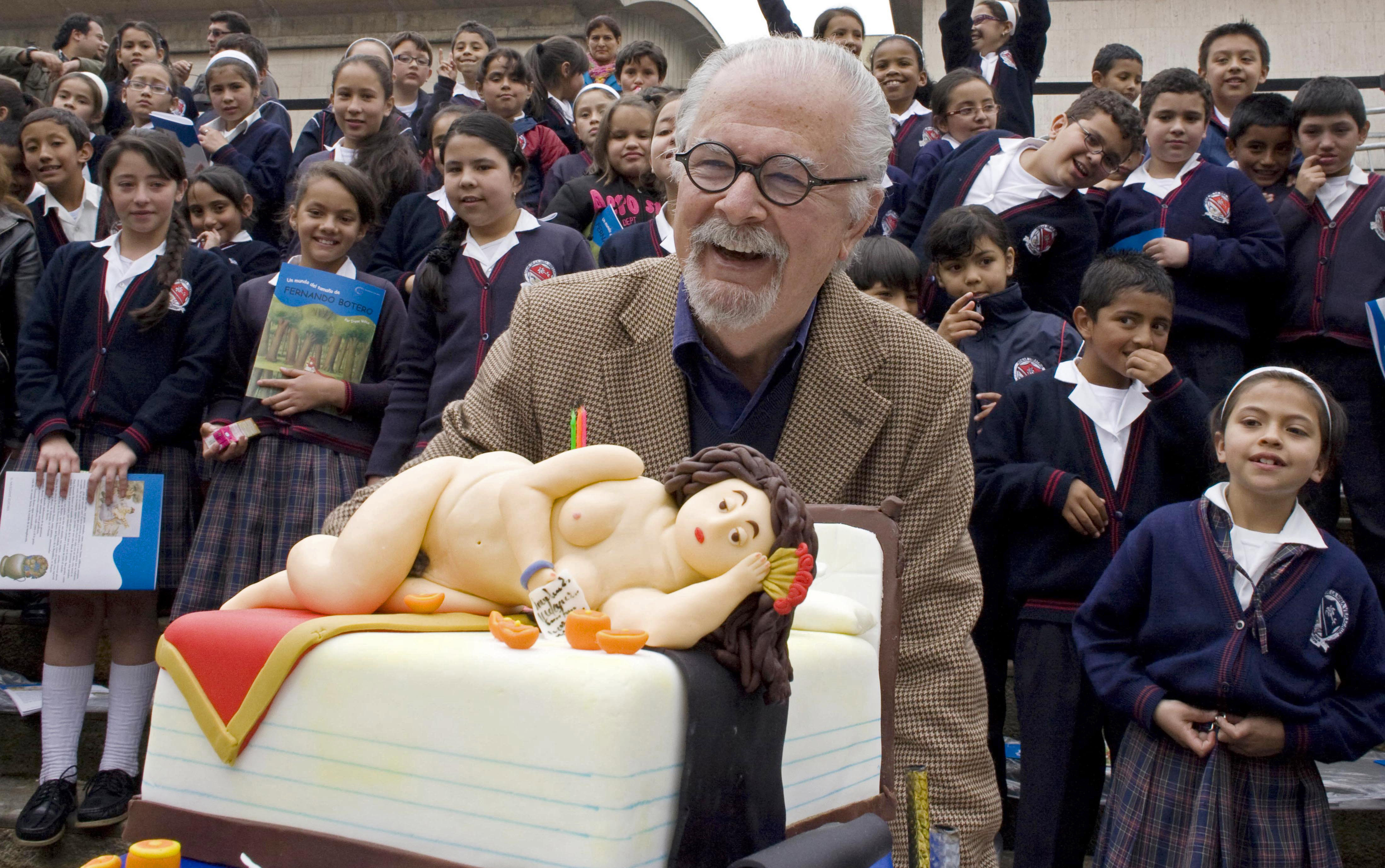 FILE - Colombian artist Fernando Botero laughs next to a cake decorated with a pastry in the likeness of one of his sculptures during his 80th birthday celebration at the Botero Museum in Bogota, Colombia, April 19, 2012. Botero died on Sept. 15, 2023 in Monaco, according to his daughter Lina Botero who confirmed his passing to Colombian radio station Caracol. (AP Photo/William Fernando Martinez, File)
FILE - Colombian artist Fernando Botero laughs next to a cake decorated with a pastry in the likeness of one of his sculptures during his 80th birthday celebration at the Botero Museum in Bogota, Colombia, April 19, 2012. Botero died on Sept. 15, 2023 in Monaco, according to his daughter Lina Botero who confirmed his passing to Colombian radio station Caracol. (AP Photo/William Fernando Martinez, File)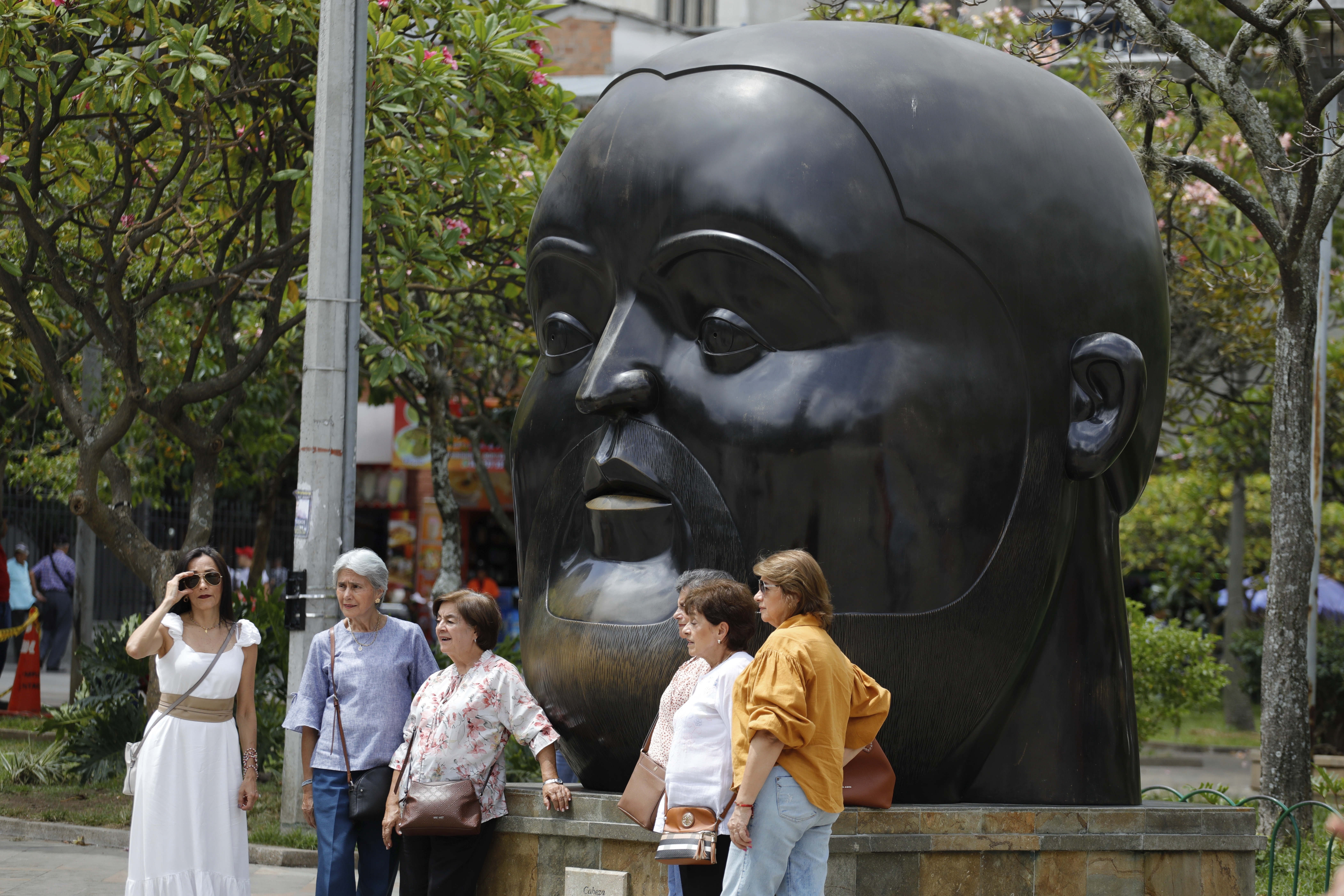 People pose for photos in front of a sculpture by Colombian artist Fernando Botero at Botero Park in Medellin, Colombia, Friday, Sept. 15, 2023. Renowned Colombian painter and sculptor Fernando Botero, whose depictions of people and objects in plump, exaggerated forms became emblems of Colombian art around the world, has died on Sept. 15. He was 91. (AP Photo/Jaime Saldarriaga)
People pose for photos in front of a sculpture by Colombian artist Fernando Botero at Botero Park in Medellin, Colombia, Friday, Sept. 15, 2023. Renowned Colombian painter and sculptor Fernando Botero, whose depictions of people and objects in plump, exaggerated forms became emblems of Colombian art around the world, has died on Sept. 15. He was 91. (AP Photo/Jaime Saldarriaga)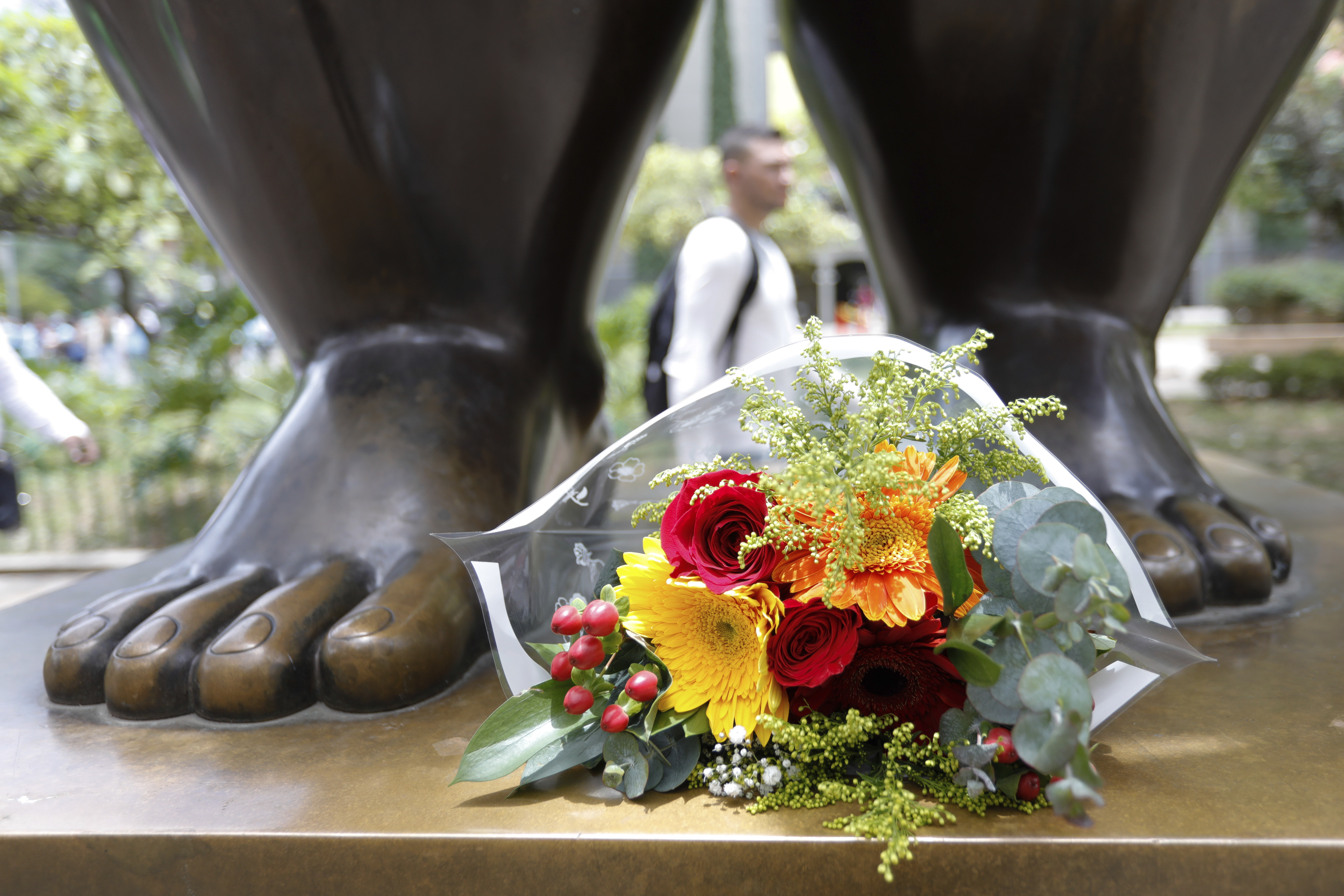 Flowers sit at the feet of a sculpture by Colombian artist Fernando Botero at Botero Park in Medellin, Colombia, Friday, Sept. 15, 2023. Renowned Colombian painter and sculptor Fernando Botero, whose depictions of people and objects in plump, exaggerated forms became emblems of Colombian art around the world, has died on Sept. 15. He was 91. (AP Photo/Jaime Saldarriaga)
Flowers sit at the feet of a sculpture by Colombian artist Fernando Botero at Botero Park in Medellin, Colombia, Friday, Sept. 15, 2023. Renowned Colombian painter and sculptor Fernando Botero, whose depictions of people and objects in plump, exaggerated forms became emblems of Colombian art around the world, has died on Sept. 15. He was 91. (AP Photo/Jaime Saldarriaga)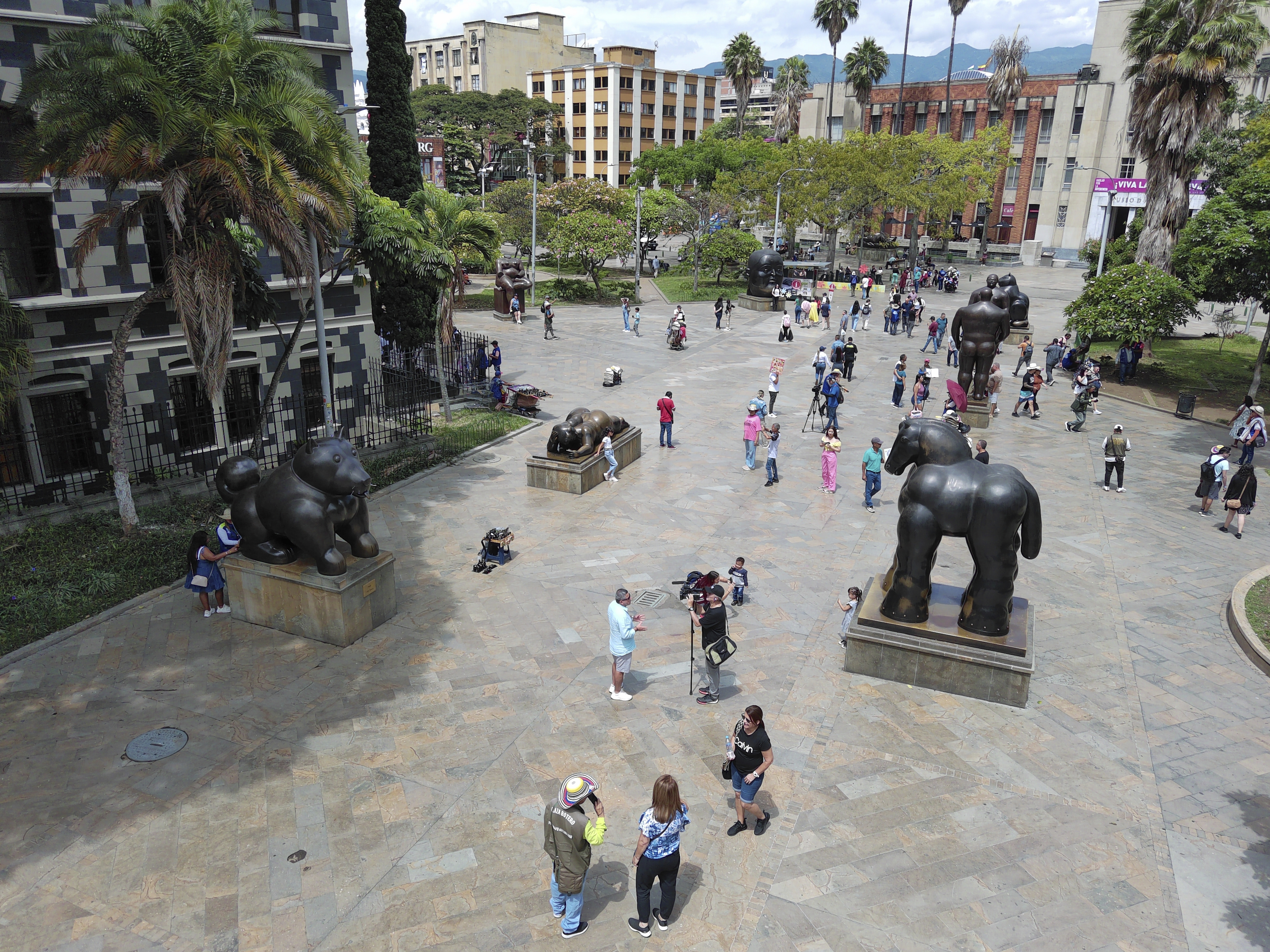 People walk past sculptures by Colombian artist Fernando Botero at Botero Park in Medellin, Colombia, Friday, Sept. 15, 2023. Renowned Colombian painter and sculptor Fernando Botero, whose depictions of people and objects in plump, exaggerated forms became emblems of Colombian art around the world, has died on Sept. 15. He was 91. (AP Photo/Jaime Saldarriaga)
People walk past sculptures by Colombian artist Fernando Botero at Botero Park in Medellin, Colombia, Friday, Sept. 15, 2023. Renowned Colombian painter and sculptor Fernando Botero, whose depictions of people and objects in plump, exaggerated forms became emblems of Colombian art around the world, has died on Sept. 15. He was 91. (AP Photo/Jaime Saldarriaga)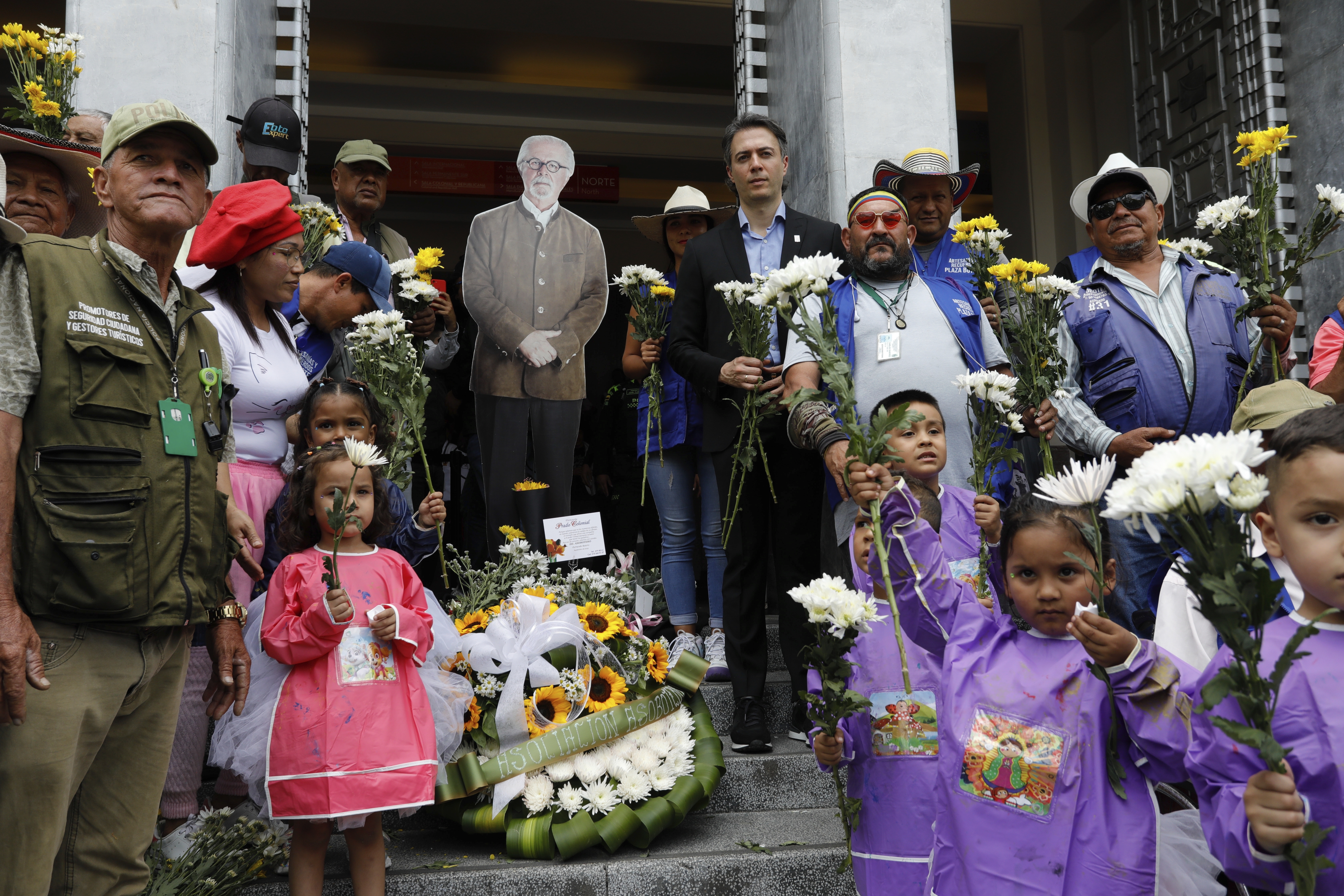 Medellin Mayor Daniel Quintero, center top, poses for photos with residents outside the Fernando Botero Museum in Medellin, Colombia, Friday, Sept. 15, 2023. Renowned Colombian painter and sculptor Fernando Botero, whose depictions of people and objects in plump, exaggerated forms became emblems of Colombian art around the world, has died on Sept. 15. He was 91. (AP Photo/Jaime Saldarriaga)
Medellin Mayor Daniel Quintero, center top, poses for photos with residents outside the Fernando Botero Museum in Medellin, Colombia, Friday, Sept. 15, 2023. Renowned Colombian painter and sculptor Fernando Botero, whose depictions of people and objects in plump, exaggerated forms became emblems of Colombian art around the world, has died on Sept. 15. He was 91. (AP Photo/Jaime Saldarriaga)